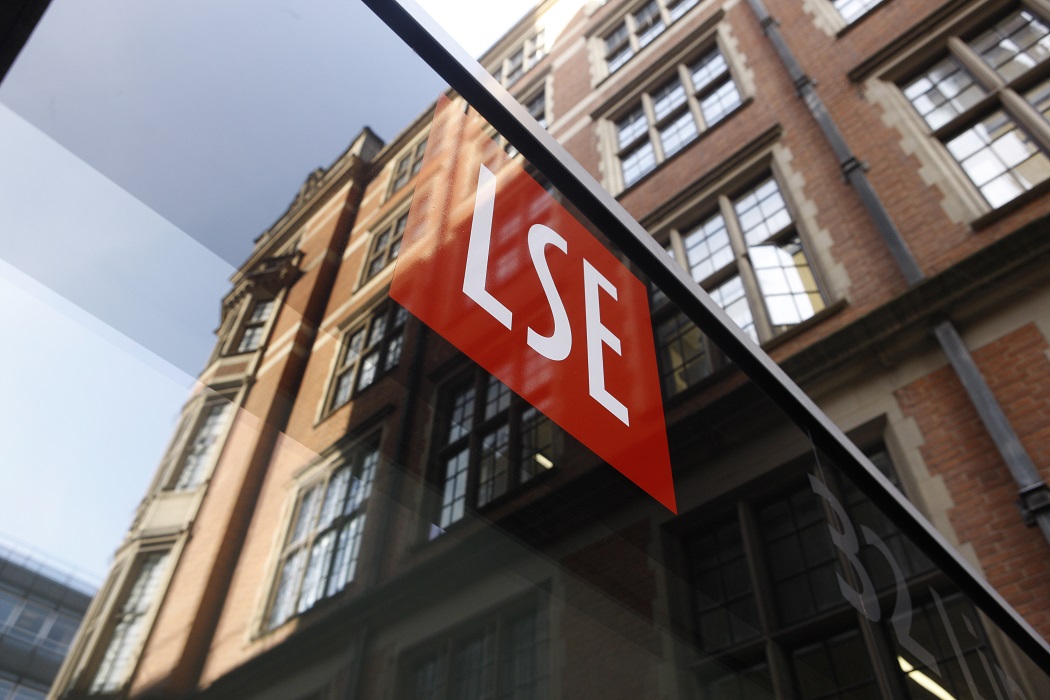 One of the most important innovations in the EU in recent years has been the so called ‘Spitzenkandidaten’ process, under which the major European political groups nominated candidates for President of the Commission prior to the 2014 European elections. Martin Westlake assesses the legacy of the process for future elections. He writes that the Spitzenkandidaten system did not emerge in isolation in 2014, but instead reflected long-term trends in the EU’s institutional development which are likely to continue to shape the future of the Commission.
One of the most important innovations in the EU in recent years has been the so called ‘Spitzenkandidaten’ process, under which the major European political groups nominated candidates for President of the Commission prior to the 2014 European elections. Martin Westlake assesses the legacy of the process for future elections. He writes that the Spitzenkandidaten system did not emerge in isolation in 2014, but instead reflected long-term trends in the EU’s institutional development which are likely to continue to shape the future of the Commission.
During the 2014 European elections, media and academic interest understandably focused on the so-called ‘Spitzenkandidaten’ (lead candidates) procedure that led to the election of Jean-Claude Juncker as President of the European Commission and enabled him subsequently to introduce a series of structural reforms, including the creation of vice-presidents with roles as legislative filters. But through focus on the near-term campaign, commentators tended to over-look a series of longer-term trends which had inexorably led toward both the election of somebody like Juncker and the creation of the reforms that he subsequently introduced.

Those trends included, first, an increasingly crowded institutional landscape in which the European Commission sought for a way to reassert its authority, albeit in a more restrained context, based on clearer lines of command and legitimacy. This is something which the Juncker Commission, with its double legitimacy in majority decisions in the Parliament and in the European Council, clearly enjoys.
A second trend was the swing between visionary, charismatic individuals and quiet consolidators as presidents of the Commission, as well as a consequent shift towards technocratic, managerial, Prime-Ministerial Presidents, with all that this might entail for the Commission’s working methods (particularly the shift from a collegial to a cabinet style of governance). Because of the very nature of the procedure that led to his election, Juncker is very much primus (first) not inter pares (among equals) and he has brought to the position all the authority of his eighteen years of experience as a Prime Minister.
A third trend was the growing size of, and numbers in, the European Commission. The Lisbon Treaty’s attempt to limit those numbers was undermined by the deal done in the context of the second (2009) Irish referendum campaign. But Commission presidents have been faced with an increasing imperative to somehow ‘unhook’ individual Commissioners from individual portfolios. The genius of the Juncker reforms, forced through with his new authority and legitimacy, was to do this top-down (that is, to install Vice-Presidents in charge of project teams but with no personal portfolios).
A fourth, related, trend has been the growing empowerment of the European Commission President, both through treaty changes and through internal reforms (for example, Barroso’s 2004 move to make the Secretariat-General work to the President rather than the College). This trend has been in some considerable part a response to the seemingly inexorable growth in the number of Commissioners, making for an increasingly unwieldy body.
A fifth trend, related to the first, is the growing role of the European Council of which – a frequently overlooked fact – the European Commission President is himself a member. When Jean-Claude Juncker returns to the Commission after European Council meetings it is in order to implement decisions or follow guidelines with which he himself has been associated.
A sixth trend, a constant leitmotif since the first direct elections were held in 1979, has been the growing powers of the European Parliament, both with regard to the European Commission President and his selection, and the Commission as a body. The relationship is symbiotic and has always been coloured by complicity. The two are fellow supranational bodies. The Parliament seeks influence and control, the Commission seeks legitimacy and support.
A seventh trend has been the growing debate in Germany, fuelled by the writings of several distinguished intellectuals and further exacerbated by concerns about the ‘Grexit’ crisis and the German constitutional court’s 2011 ruling, about the democratic nature of the European Union (and of the European Parliament). Whatever the niceties of the Treaty provisions (and the German language version of the article in question is, strangely, more specific), the popular view, as summed up by the German media, was: if Spitzenkandidaten there should be, then Spitzenkandidaten there must be!
Lastly, while the Party of European Socialists, through the early emergence of Martin Shulz’s nomination and his subsequent charismatic and dynamic campaign, took the initiative, and whilst various political groupings have been thinking about ways of bolstering the linkage between European elections and the European Commission since the 1990s, it was the European People’s Party (EPP) which, since at least 2002, had been consistently pushing the concept of Spitzenkandidaten.
Thus, the 2004 and 2009 appointments of José Manuel Barroso as European Commission President were already portrayed by the EPP as a response to its ‘majorities’ in the 2004 and 2009 European Elections and as ‘anticipations’ of the provisions of the ill-fated Constitutional Treaty and then the Lisbon Treaty. The EPP’s 2014 electoral ‘victory’ and the subsequent selection of Jean-Claude Juncker were seen as part of that continuum.
Indeed, Jean-Claude Juncker’s Presidency of the European Commission lies at the confluence of all of these trends and transitions. Moreover, these trends will continue, with future Commission Presidents, candidates, European Parliaments, European Councils, and so on, all seeking to build on (or overturn) the precedents that have been set. So what happens next time, in 2019, and what will this mean for the Union’s institutional balance?
One potential development is that Member State governments, particularly from the two big party families, could ‘pre-select’ and groom their preferred candidates: Prime Ministers will presumably be more active within their parties in this regard. Alternatively, the European Council, as an institution, could try somehow to pre-empt another parliamentary ‘gambit’.
In terms of the candidates themselves, it may be that Spitzenkandidaten will in future put forward slates or teams; a sort of small cabinet of future Commissioners-in-waiting. They may draft personal manifestos or the political groups in the Parliament could try to force manifestos on to their candidates. And new developments could emerge in terms of campaign funding: potentially even with candidates raising independent funds in the style of U.S. Presidential candidates.
The question of whether candidates will have higher profiles than was the case in 2014 also remains open. For there will surely be higher levels of media interest and coverage and European political parties will surely become increasingly active and visible. And what will happen after the elections? Will the next Commission President continue with the current structures (there is no obligation under the Treaties)?
Will the Member States nominate enough heavy-hitters (in particular former Prime Ministers) to enable the next President to continue with Juncker’s structure of Vice-Presidents and project teams? Indeed, it could be the case that some Member States might nominate former heavy-hitters tactically with a view to winning strategically important Vice-Presidencies.
In any case, taking the longer-term view enables us to see that, important though the 2014 European election campaign, the Spitzenkandidaten procedure and the Juncker reforms were, they were the result of various trends that are set to continue, and not sudden, one-off events.
Please read our comments policy before commenting.
Note: This article is based on Martin Westlake’s recent LSE ‘Europe in Question’ Discussion Paper. It gives the views of the author, and not the position of EUROPP – European Politics and Policy, nor of the London School of Economics or any other institution or organisation.
Shortened URL for this post: http://bit.ly/1R9CpcW
_________________________________
 Martin Westlake – College of Europe / LSE
Martin Westlake – College of Europe / LSE
Martin Westlake is Visiting Professor at the College of Europe in Bruges and a Senior Visiting Fellow at the LSE’s European Institute.




Very interesting subject and some interesting detail here. It’s a shame the article ends with so many questions, without much attempt at answers!
Here, for me, are a few key questions:
– a key power of a prime minister is the reshuffle: when they promote their ministers that have performed well, and demote those that haven’t. Will Juncker do this during his first term of office? If yes, when? He doesn’t seem to have made any hints so far of this. He may prefer to wait until 2019, but a half-term reshuffle at the end of 2016, relatively unhindered by other considerations, could be a good way for Juncker to strengthen his hand.
– likewise, the key power of a parliament is to pass no confidence in individual portfolio holders. By some measures, the parliament had less influence in 2014 than they did in 2009, largely due to the influence of the EPP-SOC grand coalition. Will they force the removal of anyone in this term, and if so who and why? So far it seems the answer is no – but maybe a corruption scandal or gross incompetence could be the excuse for the parliament to flex their muscles. Some of the commissioners are politically exposed – perhaps Jonathan Hill over bank regulation, Navracsics over the Hungarian government, Canete over energy or Avramopoulos over migration. So far there seems to be nothing serious enough that would manage to overturn or split the grand coalition. However, Schulz is due to hand over as president of parliament to the EPP in 2017 – perhaps this will weaken Socialist support for the grand coalition. Perhaps TTIP is the one thing that could both split the grand coalition and unite the other factions of the parliament against the EPP?
– will Juncker get the EPP nomination again in 2019? Assuming he doesn’t fall out with Merkel, he seems assured of winning. That being the case , it seems quite possible that he would run unopposed – after all, what benefit would there be in opposing him? In the process last time round you needed the support of three national parties to stand – if the same standard was used it would be hard to imagine anyone getting a nomination.
– will the ECR nominate anyone this time round? Last time they refused in order to undermine the process; this time, they may feel it is better to play the game. Brexit would obviously reduce their number of seats significantly, but with more members from Germany (AfD) at least they would still be a force.
– realistically, only the EPP or SOC could top the poll in 2019, given that they were 120 seats clear of the third placed conservatives. A single Green/Left candidate would be only 90 behind, and possibly with a wind behind them depending on developments by then. But would national rivalries, say in Germany, prevent this? Likewise, a conservative/eurosceptic candidate would be strong, but presumably the UKIP/Conservative rivalry in the UK would prevent that.
– would Schult get the nomination again? Presumably he would seek it again and he had very little opposition last time. Perhaps a former prime minister or successful commission could convince the party they had a better chance? Who knows, Renzi if he loses the next Italian general election? A commissioner like Timmermans or Moscovici?
– If the SOCs do badly and EPP do well, would they be able to choose between continuing the EPP-SOC grand coalition or running with a more politically stable EPP-ECR coalition? It’s difficult to see the numbers working in 2019, but I’m sure Juncker would want to have the option.
Lots to think about and lots to look out for!